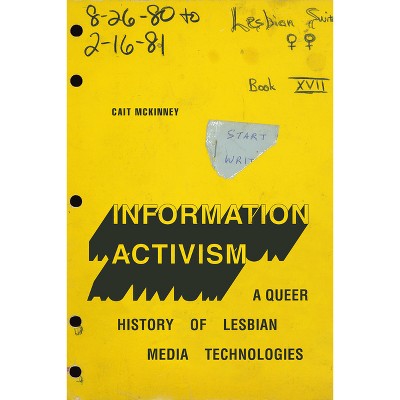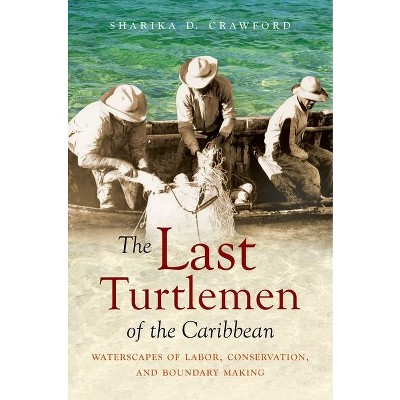Sponsored

Captivity's Collections - (Flows, Migrations, and Exchanges) by Kathleen S Murphy
In Stock
Sponsored
About this item
Highlights
- Cashews from Africa's Gold Coast, butterflies from Sierra Leone, jalap root from Veracruz, shells from Jamaica--in the eighteenth century, these specimens from faraway corners of the Atlantic were tucked away onboard inhumane British slaving vessels.
- Author(s): Kathleen S Murphy
- 256 Pages
- History, Europe
- Series Name: Flows, Migrations, and Exchanges
Description
About the Book
"Cashews from Africa's Gold Coast, butterflies from Sierra Leone, jalap root from Veracruz, shells from Jamaica--in the eighteenth century, these specimens from faraway corners of the Atlantic were tucked away onboard inhumane British slaving vessels. Kathleen S. Murphy argues that the era's explosion of new natural knowledge was deeply connected to the circulation of individuals, objects, and ideas through the networks of the British transatlantic slave trade. Plants, seeds, preserved animals and insects, and other specimens were gathered by British slave ship surgeons, mariners, and traders at slaving factories in West Africa, in ports where captive Africans disembarked, and near the British South Sea Company's trading factories in Spanish America. The specimens were displayed in British museums and herbaria, depicted in published natural histories, and discussed in the halls of scientific societies. Grounded in extensive archival research on both sides of the Atlantic, Captivity's Collections mines scientific treatises, slaving companies' records, naturalists' correspondence, and museum catalogs to recover in rich detail the scope of the slave trade's collecting operations. The book reveals the scientific and natural historical profit derived from these activities and the crucial role of specimens gathered along the routes of the slave trade on emerging ideas in natural history"--Book Synopsis
Cashews from Africa's Gold Coast, butterflies from Sierra Leone, jalap root from Veracruz, shells from Jamaica--in the eighteenth century, these specimens from faraway corners of the Atlantic were tucked away onboard inhumane British slaving vessels. Kathleen S. Murphy argues that the era's explosion of new natural knowledge was deeply connected to the circulation of individuals, objects, and ideas through the networks of the British transatlantic slave trade. Plants, seeds, preserved animals and insects, and other specimens were gathered by British slave ship surgeons, mariners, and traders at slaving factories in West Africa, in ports where captive Africans disembarked, and near the British South Sea Company's trading factories in Spanish America. The specimens were displayed in British museums and herbaria, depicted in published natural histories, and discussed in the halls of scientific societies.
Grounded in extensive archival research on both sides of the Atlantic, Captivity's Collections mines scientific treatises, slaving companies' records, naturalists' correspondence, and museum catalogs to recover in rich detail the scope of the slave trade's collecting operations. The book reveals the scientific and natural historical profit derived from these activities and the crucial role of specimens gathered along the routes of the slave trade on emerging ideas in natural history.
Review Quotes
"Captivity's Collections . . . fills an important gap in [the historiography of natural history and slavery] by focusing on the slave trade. . . . Murphy observes that 'conversations about decolonizing museums have rarely concerned floral, faunal, and mineral collections' (185). The achievement of Captivity's Collections--a title that resonates by the end of the book--lies in its convincing demonstration of the need to do so going forward."--Eighteenth Century Studies
"Captivity's Collections casts new light on the ways that the eighteenth-century British transatlantic slave trade influenced the development of early modern science. . . . Murphy's fascinating . . . claim that naturalists like Smeathman viewed natural commodity markets by the late eighteenth century as potential avenues for abolitionism deserves to be unpacked by future scholars."--Journal of Southern History
"Captivity's Collections tells a story both large and obscure. Murphy shows how her research illuminates the history of science, Atlantic studies, and the legacies of slavery . . . [and] her primary sources . . . yield fascinating details."--North Carolina Historical Review
"[Murphy's] work, which throws light on the darker connections of the times, results in a book teeming with historical information, while also maintaining her central argument that slavery and naturalism were inextricably dovetailed. Captivity's Collection is the latest in a darkly botanical interrogation of the spread of botanical interest and inquiry. It lays bare the British imperial fervor that drove botanical and natural history exploration. Murphy is doing Dark Botany, and I thank her for it."--EuropeNow
"[Murphy] underscores the deliberate and direct human activities that furnished the cabinets of major collectors during the long 18th century of exploration and natural history classification. Detailed attention to the processes of identifying, acquiring, preserving, boxing, and then transporting specimens about reveals how much the agents relied on the knowledge, skills, and physical strength of local people, typically enslaved or otherwise under imperial authority."--Journal of the History of Biology
"Adds a rich chronology to previous scholarship. . . . Captivity's Collections would fit well in graduate courses on Atlantic slavery and undergraduate courses on the history of science and environmental history."--Environmental History
"Remarkable. . . . [T]o better understand how we came to know what we think we know about science and the natural world, historians must reckon with the ugly legacies of colonialism, enslavement, and genocide in these same spaces. This book offers a captivating and challenging step in that direction."--American Historical Review
"Richly detailed, this book reveals how plants became entangled in the political and economic structures of the British slave trade."--Londa Schiebinger, author of Secret Cures of Slaves: People, Plants, and Medicine in the Eighteenth-Century Atlantic World
"This work will be of use to those looking at the provenance of eighteenth-century natural history artifacts, particularly those of African extraction. It also highlights an often-overlooked use of the slave trade infrastructure in Africa and the New World."-H-Sci-Med-Tech
"What sets Murphy's book apart is how thoroughly it links natural history to the operations of successive British slaving companies--first the Royal African Company and then the South Sea Company. . . . Captivity's Collections is a short and highly readable book. . . . The enduring profits of the slave trade, [Murphy] concludes, must be understood to include these forms of intellectual capital."--Journal of Modern History
Shipping details
Return details
Trending Non-Fiction

















